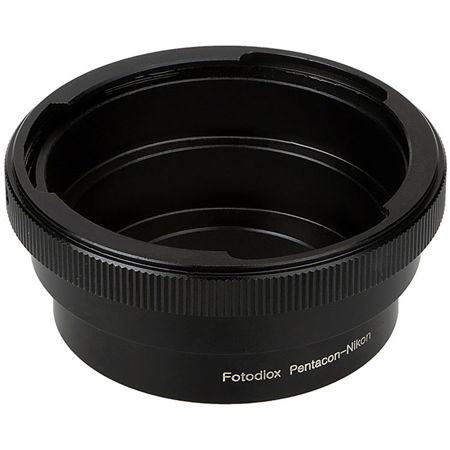


If you are going to attach a chip to an existing adapter it's very important to glue it in exactly the right spot so that the contacts on the chip align properly with the pins of the camera.

I have used three of them from different sources (all via eBay) and I have had no issues with any of them. While many people have had good luck with the AF confirmation chips and chip enabled adapters, there have been a few reports that they have damaged cameras. Under these conditions the camera body activates the "green dot" autofocus confirmation light in the camera viewfinder, so that you get the in-focus indication and "beep" when you have the lens focused on the subject.
#PENTACON 6 TO CONTAX 645 ADAPTER MANUAL#
Essentially it fools the body into thinking that an EOS EF/EF-S series lens is attached and the lens has been switched into manual focus mode. This is a small electronic chip in a molded housing with contacts that connect with the electronic lens contact pins in the Canon EOS camera body. The only downside is that it's time consuming and you can't do it with the camera up to your eye.Ī third alternative is to use a lens adaptor with what is called an "AF confirmation chip" attached. This is the best and most accurate method of judging focus. A viewfinder magnifier is often helpful.Īlternatively, most current DSLRs have a live view capability, which displays the actual image from the sensor on the rear LCD in real time, often with the option of magnifying the image. It is possible to get accurate focus, but you need a properly aligned viewfinder screenĪnd good eyesight. While special manual focus aided viewfinder screens are available for a few EOS bodies, in most cases you Using the standard EOS viewfinder screen, since it has no focus aids (like a split imageĬenter). Many people have trouble accurately focusing Shooting aperture before the shot is taken.įocusing the lens is another issue.
#PENTACON 6 TO CONTAX 645 ADAPTER FULL#
That means that the lens isįirst focused at full aperture (for maximum accuracy), then manually stopped down to the When a mechanical iris lens is mounted on an EOS body, stop down metering must be used. The EOS lens interface is fully electronic and Canon EOS EF and EF-S series lenses are stopped down via electrical signals from the camera For almost all manual focus lenses, this stopping down during exposure is accomplished mechanically via a lever which is moved as the cameras mirror flips up. This gives aīrighter viewfinder image and makes focusing easier and more accurate. Just before exposure, then it stops down for the exposure and opens up again.

In addition you don't get any sort of automatic iris operation.Īt full aperture, and if you set the aperture to, say, f11, it remains fully open until Of course you don't get autofocus, nor do you get any sort of focus confirmation unless you use a special adapter with built in electronics. The answer is a qualified "yes" in manyĬases. Left:Bower fisheye manual focus Center: Vivitar 85/1.4 manual focus Right: Zeiss 21/2.8 manual focusĪ common question from Canon EOS owners is whether older manual focus lenses from other manufacturersĬan be used with a Canon EOS body. Using Manual Focus Lenses on Canon EOS bodies


 0 kommentar(er)
0 kommentar(er)
